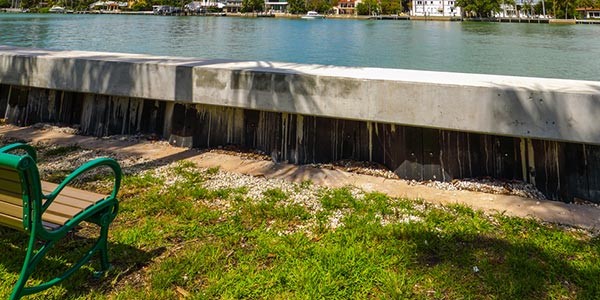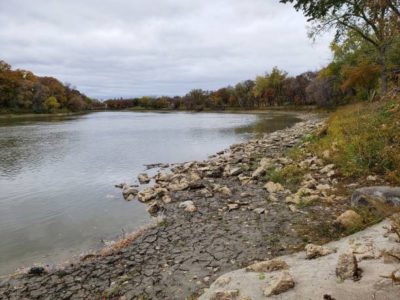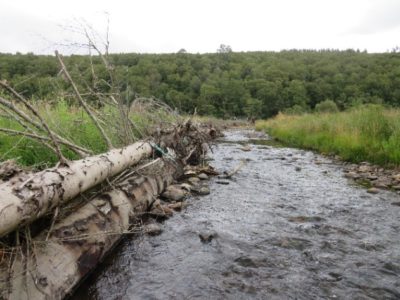
City Wildlife’s Duck Watch volunteers are often the first to witness the dramatic effect seawalls have on urban wildlife. Ducklings aren’t able to traverse these human-made structures and are left orphaned — or worse. Lacking proper feathers, ducklings are not immediately waterproof; to avoid having her new family drown, a mother duck needs to get them out of the water to dry off, and a riverbank bordered with miles of seawalls gives a mother duck no place to do that.
Another downside to a seawall (compared to a natural shoreline) is the loss of biodiversity caused by removing the natural strip of beachscape habitat known as the intertidal zone. Birds, fish, and other animals who rely on this unique landscape lose nursery and foraging grounds. Normally, as this ground shifts and changes slowly over time, ecosystems are able to adjust accordingly. But with a concrete barrier, this entire habitat — precious nesting and feeding grounds for many species — all but disappears. And the seawalls leave delicate aquatic life with little protection from predation, strong currents, and waves.
Invertebrates, turtles, and water birds are all negatively affected by traditional seawalls. But so too is the waterway itself. The sun heats up the seawalls, thereby changing a delicate microclimate. And the seawalls simply push the problem of erosion downstream — and amplify it. Unlike natural riverbanks, seawalls actually increase the velocity of the water flow, and while this does not directly affect the site of the seawall itself, in speeding the water’s current, the walls create a worsening problem downstream.
Maintaining and restoring natural shorelines and riverbanks with native vegetation offer several upsides. Natural vegetation:
- has deep root systems that help minimize soil erosion;
- can absorb heavy rainfall;
- retards currents by creating resistance to water-flow velocity;
- helps to induce and contain sediment deposition;
- provides habitat for native fauna; and
- is generally less expensive to establish and maintain compared with artificial structures.
In instances where the riverbank has already been badly eroded, “logjams” can be constructed, alongside native plantings, to recreate a more natural environment for the waterways. Offering many of the same benefits as a natural shoreline — slowing the waters, allowing for sediment deposits to build, providing habitat for native flora and fauna — they are engineered to work hand-in-hand with nature, rather than fighting against it. As the logjams age, they simply become a part of the riparian corridor or beachfront, requiring less maintenance overall.
And working hand-in-hand with nature — rather than fighting against it — is what City Wildlife is all about. We believe in keeping our eyes on the bigger picture, and striving to keep waterways safe for the enjoyment of all.




Leave a Comment